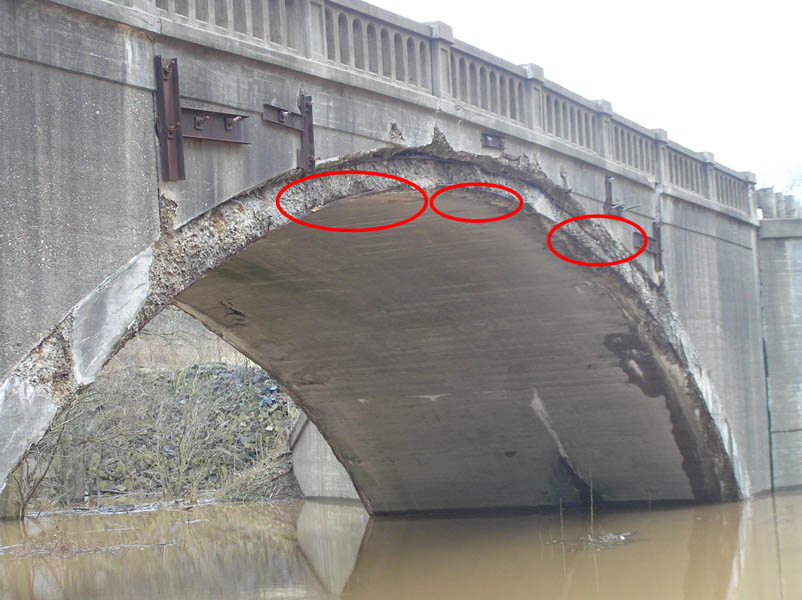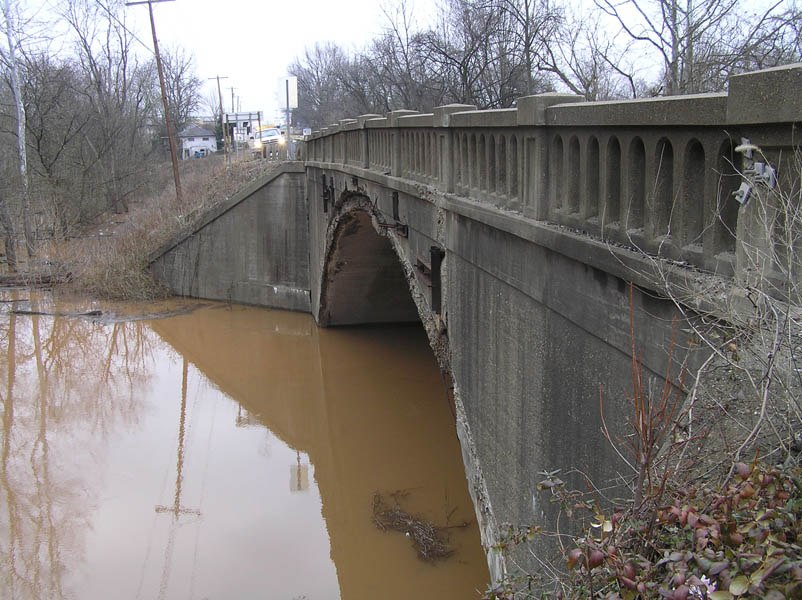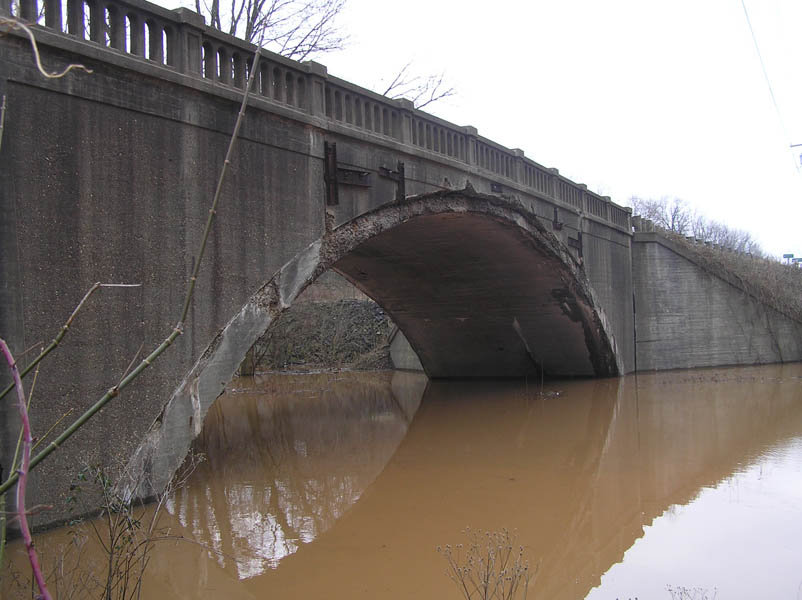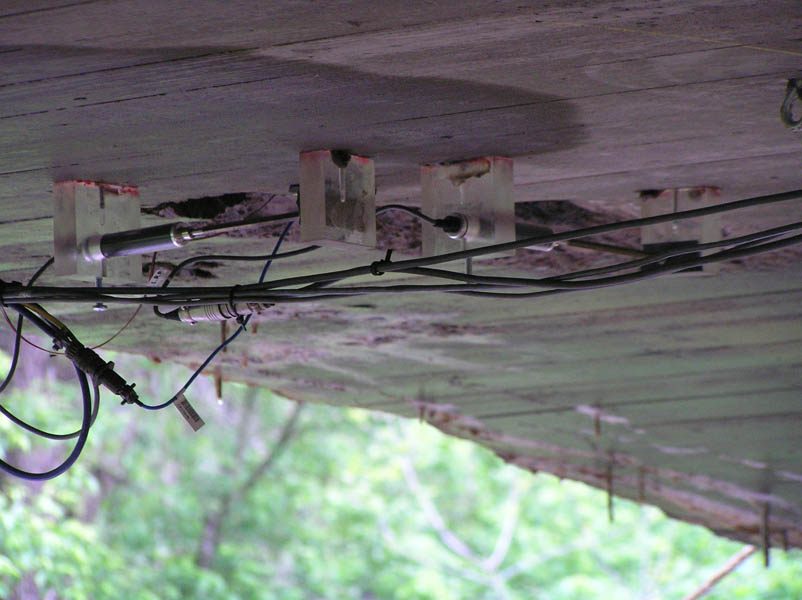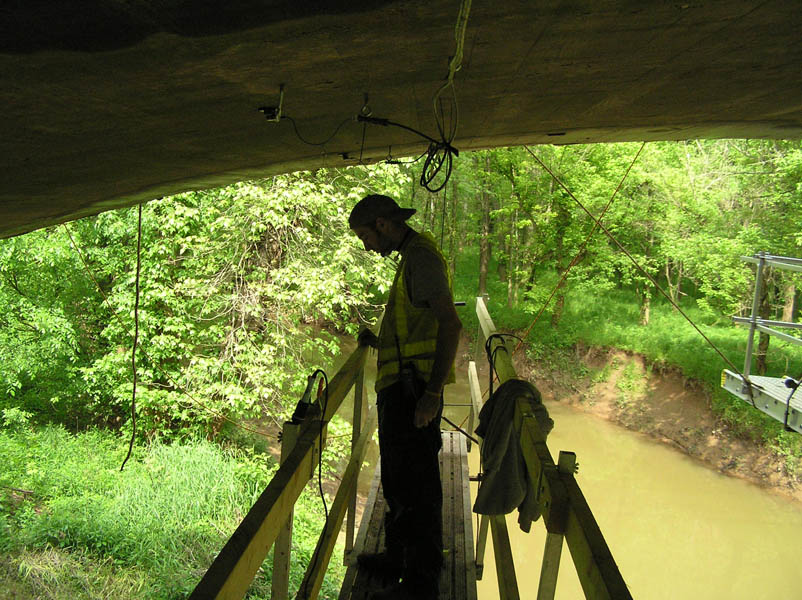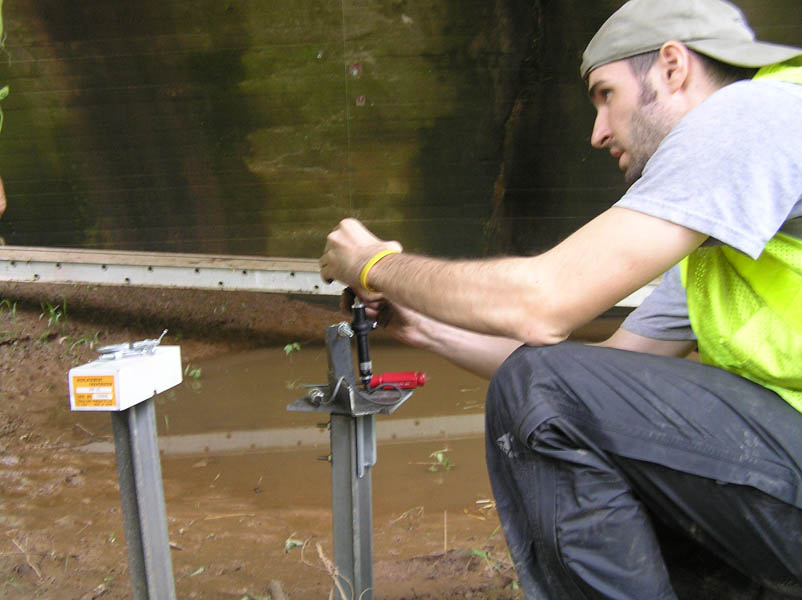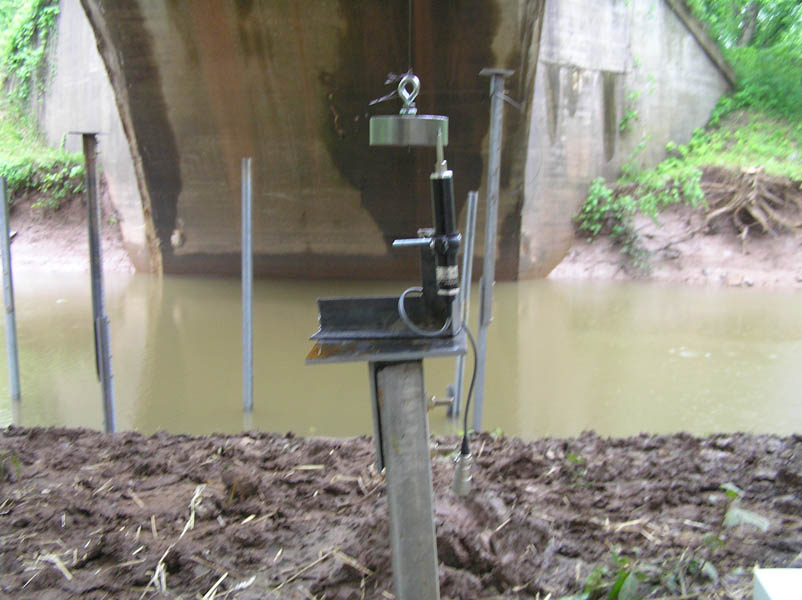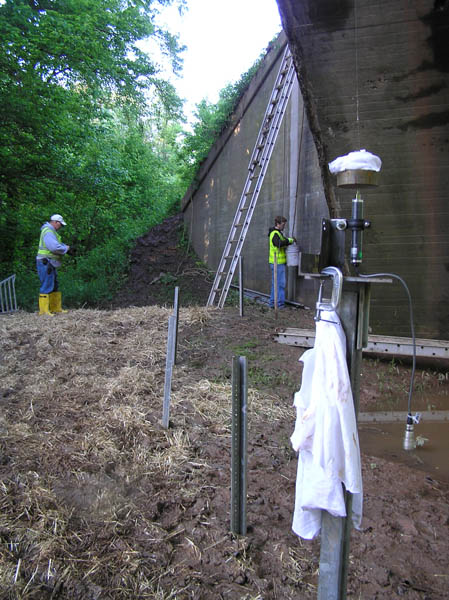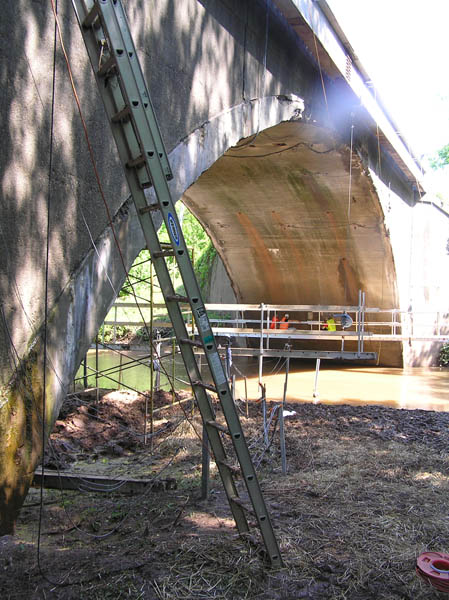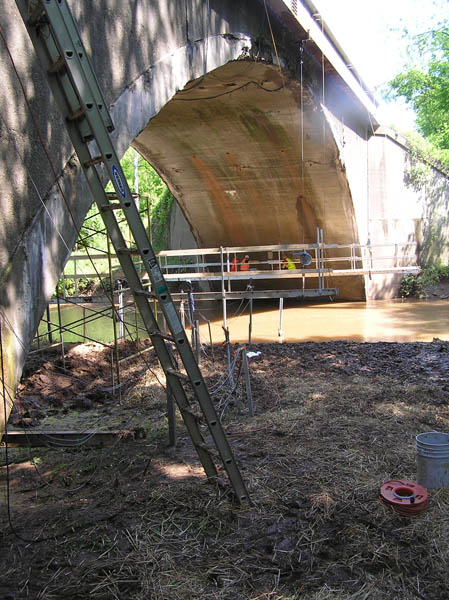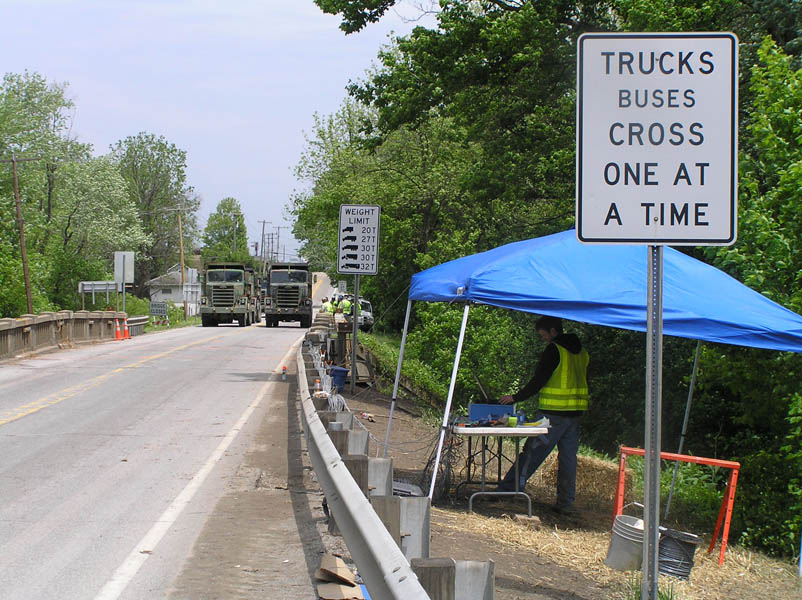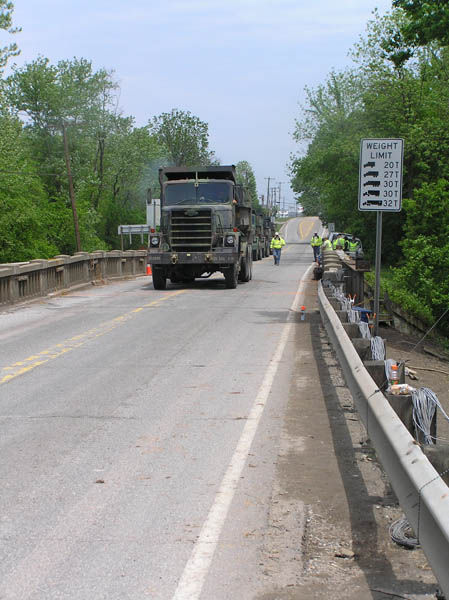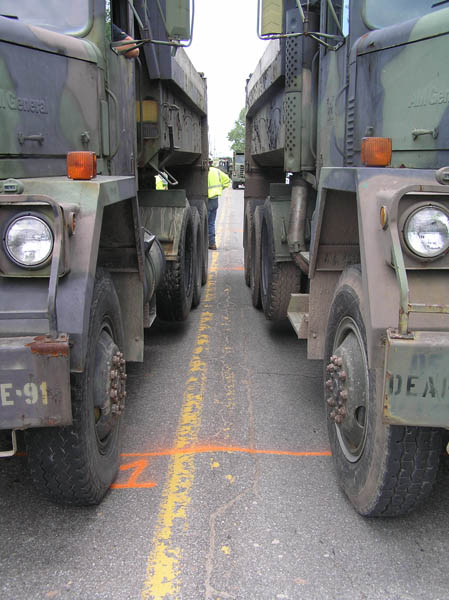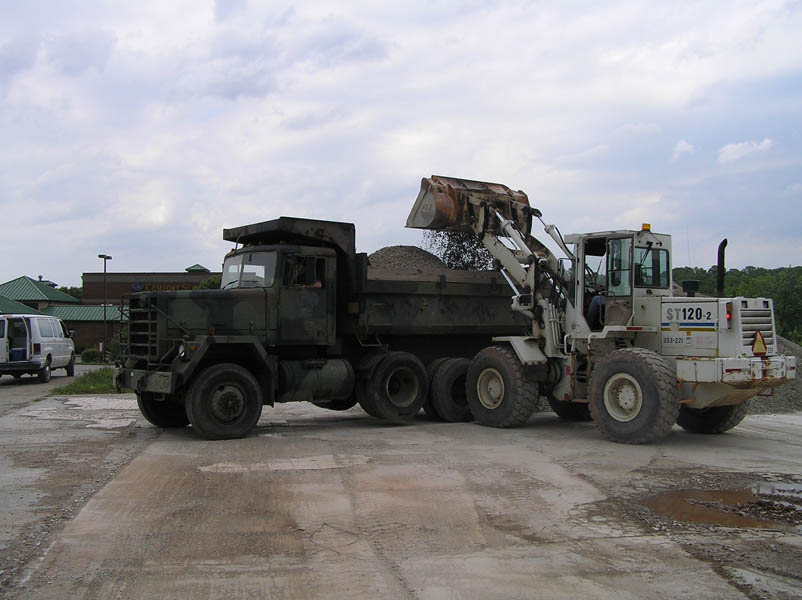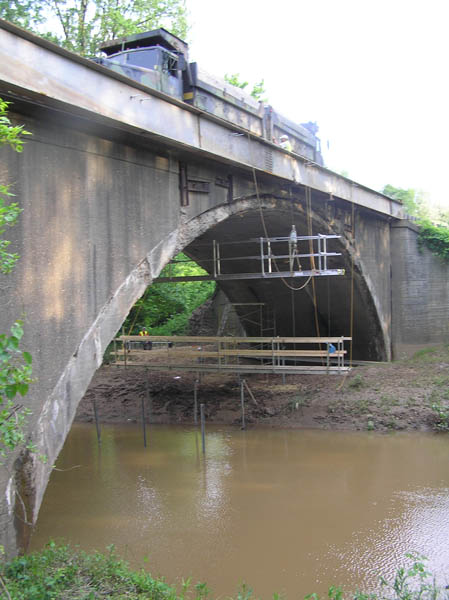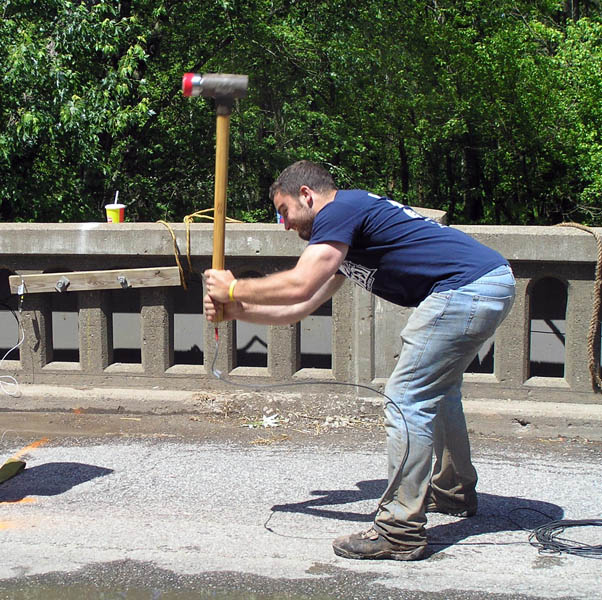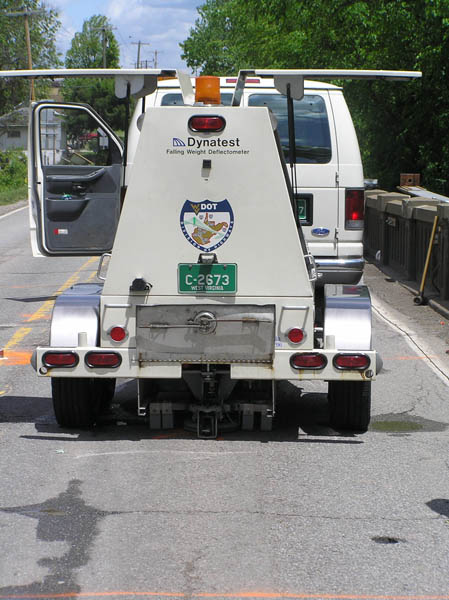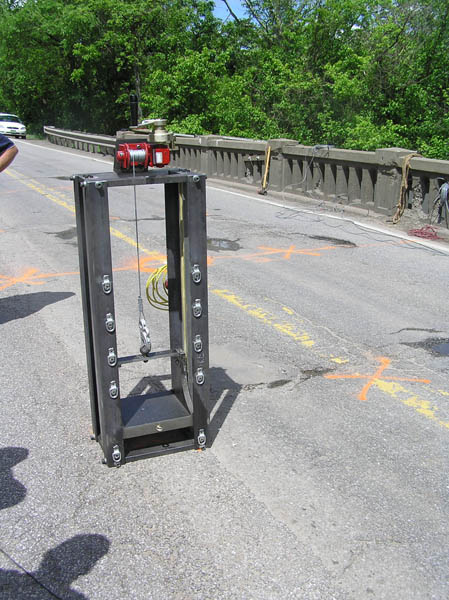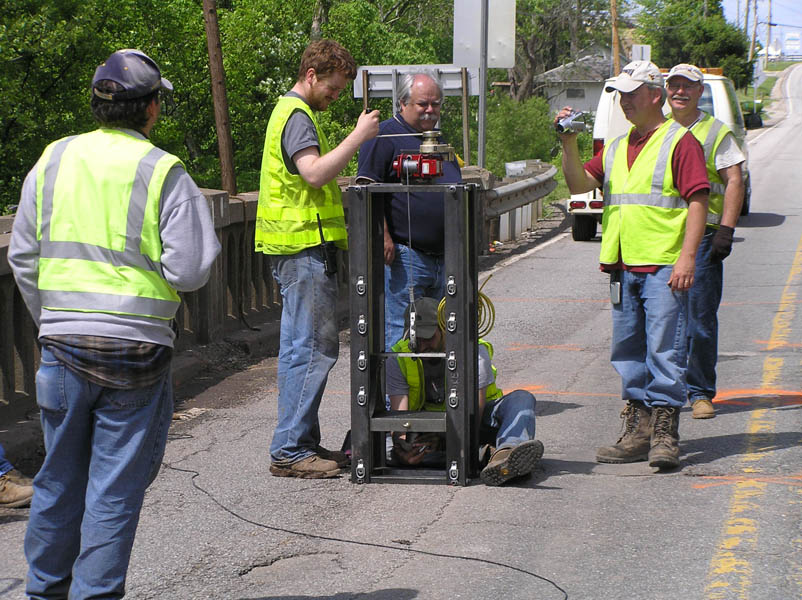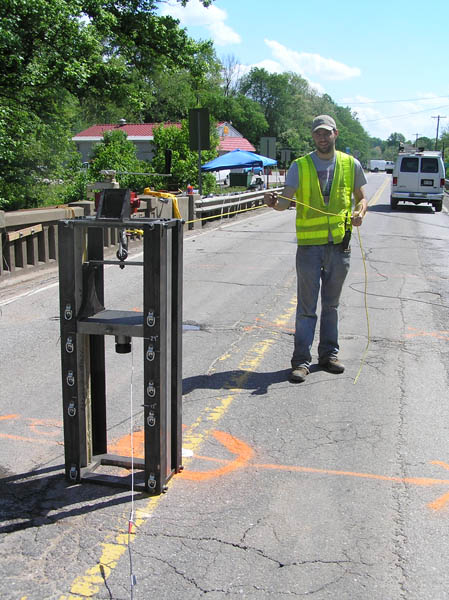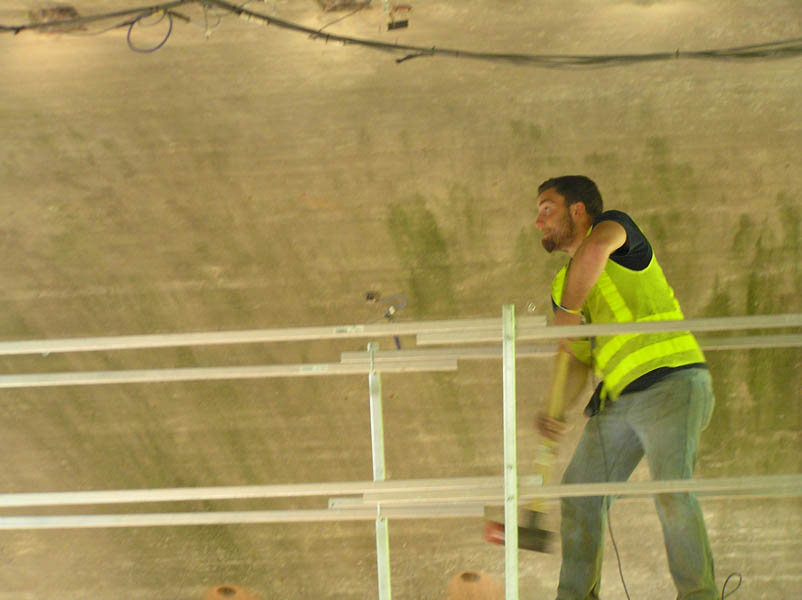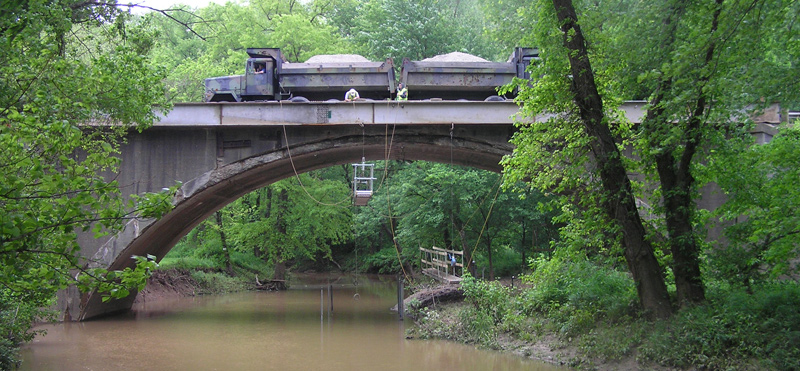
Structural Identification of Aged Reinforced Concrete Bridges
Dates: September 2005 – December 2008
Location: Various locations throughout West Virginia
PIs: A.E. Aktan and F.L. Moon
Researchers: J. Prader, J. Weidner, N. Dubbs, K. Grimmelsman
Sponsor: FHWA Project TPF-5(113)
Executive Summary
Changes in legislature in West Virginia resulted in a considerable increase of allowable loads on hundreds of bridges throughout the state when routes were opened to coal haulers. The Coal Resource Transportation System (CRTS) included over 100 bridges that were posted for live loads less than the desired levels of 120,000 pounds. The bridge inventory affected by the CRTS was widely varied and the majority of bridges had no plans or drawings. The West Virgina DOT contracted Drexel University to develop and demonstrate a methodology for reliably establishing safe load carrying capacity of aged bridges through structural identification. Techniques included the integration of analytical and experimental techniques such as finite element analysis, material testing, non-destructive evaluation, and structural load tests.
Project Description
During the three-year research project, Drexel visited over a dozen bridges that were considered representative of the WVDOT reinforced concrete (RC) bridge inventory, and performed in-depth studies on five of these bridges. These RC bridges are over 70 years old and showing varying degrees of aging, deterioration and damage. Three were single-span filled-arches, one was a single-span slab and one was a multi-span girder-slab system. The third single-span filled arch was widened by adding prestressed concrete beams on each side. Although five bridges out of nearly 1200 aged RC bridges in WVDOT’s inventory cannot be considered as a sufficient sample, the investigation led to observations, findings and conclusions that can be qualitatively generalized to apply to the entire population of reinforced concrete bridges. Additionally, four of the five bridges were cleared for the state legal limit.
When Drexel began research, there were no examples or guidelines for evaluating the load capacity of aged RC bridges with signs of deterioration and damage, especially when they were also missing documentation. The research led to establishing a cycle of on-site inspection and testing followed by model building and calibration that would yield sufficient date to provide recommendations for any cast-in-place short-and medium span RC bridge missing documentation.
The overarching lesson learned throughout the research was one of organization and prioritization. To that end, Drexel proposed a wholly new risk-based classification for RC bridges which defined risk as a function of hazard, vulnerability and exposure. This classification would add structure and clarity to the bridge inventory, easing the decision making process regarding bridge inspections and repairs.
For each structure tested, an individual repair and rehabilitation strategy was developed which focused on the specific vulnerabilities and hazards associated with that structure. These repairs ranged from minor repair of the pier caps to reconstruction of a deteriorated arch ring at a separate location. For the same bridge, due to the severity of the deterioration, in conjunction with the observed movement of the spandrel walls, a long-term monitoring system was recommended and installed by Drexel personnel. WVDOT currently monitors the new system, which replaced a prior manual string-line monitoring system.
Innovations
While the evaluation method based on proof load testing and structural identification by field-calibrated FE models remains as the most reliable approach to evaluating bridges with missing documentation, it is also time-consuming and not yet readily available for implementation by many consultants. Therefore more practical and expedient approaches are required to supplement the proof load method. This challenge led to the development of a concept for a modified falling weight deflectometer (FWD) that could deliver dynamic impact loads at various points on the bridge comparable to a truck wheel load. Research is ongoing for this technology.
Additionally, a simplified analysis method for filled-arch bridges was developed by Drexel. This type of bridge exhibits the most complex of the structural behavior mechanisms amongst the various RC bridges in the WVDOT’s inventory. Bu comparing various types of models to tested behavior, a best fit model was found that could be used to determine capacity and load rating.
September 2005 – December 2008
Location: Various locations throughout West Virginia
PIs: A.E. Aktan and F.L. Moon
Researchers: J. Prader, J. Weidner, N. Dubbs, K. Grimmelsman
Executive Summary
Changes in legislature in West Virginia resulted in a considerable increase of allowable loads on hundreds of bridges throughout the state when routes were opened to coal haulers. The Coal Resource Transportation System (CRTS) included over 100 bridges that were posted for live loads less than the desired levels of 120,000 pounds. The bridge inventory affected by the CRTS was widely varied and the majority of bridges had no plans or drawings. The West Virgina DOT contracted Drexel University to develop and demonstrate a methodology for reliably establishing safe load carrying capacity of aged bridges through structural identification. Techniques included the integration of analytical and experimental techniques such as finite element analysis, material testing, non-destructive evaluation, and structural load tests.
Project Description
During the three-year research project, Drexel visited over a dozen bridges that were considered representative of the WVDOT reinforced concrete (RC) bridge inventory, and performed in-depth studies on five of these bridges. These RC bridges are over 70 years old and showing varying degrees of aging, deterioration and damage. Three were single-span filled-arches, one was a single-span slab and one was a multi-span girder-slab system. The third single-span filled arch was widened by adding prestressed concrete beams on each side. Although five bridges out of nearly 1200 aged RC bridges in WVDOT’s inventory cannot be considered as a sufficient sample, the investigation led to observations, findings and conclusions that can be qualitatively generalized to apply to the entire population of reinforced concrete bridges. Additionally, four of the five bridges were cleared for the state legal limit.
When Drexel began research, there were no examples or guidelines for evaluating the load capacity of aged RC bridges with signs of deterioration and damage, especially when they were also missing documentation. The research led to establishing a cycle of on-site inspection and testing followed by model building and calibration that would yield sufficient date to provide recommendations for any cast-in-place short-and medium span RC bridge missing documentation.
The overarching lesson learned throughout the research was one of organization and prioritization. To that end, Drexel proposed a wholly new risk-based classification for RC bridges which defined risk as a function of hazard, vulnerability and exposure. This classification would add structure and clarity to the bridge inventory, easing the decision making process regarding bridge inspections and repairs.
For each structure tested, an individual repair and rehabilitation strategy was developed which focused on the specific vulnerabilities and hazards associated with that structure. These repairs ranged from minor repair of the pier caps to reconstruction of a deteriorated arch ring at a separate location. For the same bridge, due to the severity of the deterioration, in conjunction with the observed movement of the spandrel walls, a long-term monitoring system was recommended and installed by Drexel personnel. WVDOT currently monitors the new system, which replaced a prior manual string-line monitoring system.
Innovations
While the evaluation method based on proof load testing and structural identification by field-calibrated FE models remains as the most reliable approach to evaluating bridges with missing documentation, it is also time-consuming and not yet readily available for implementation by many consultants. Therefore more practical and expedient approaches are required to supplement the proof load method. This challenge led to the development of a concept for a modified falling weight deflectometer (FWD) that could deliver dynamic impact loads at various points on the bridge comparable to a truck wheel load. Research is ongoing for this technology.
Additionally, a simplified analysis method for filled-arch bridges was developed by Drexel. This type of bridge exhibits the most complex of the structural behavior mechanisms amongst the various RC bridges in the WVDOT’s inventory. Bu comparing various types of models to tested behavior, a best fit model was found that could be used to determine capacity and load rating.
Selected Publications
Weidner, J., J. Prader, N. Dubbs, F.L. Moon and A.E. Aktan (2009) “Structural Identification of Bridges to Assess Safety and Performance,” 2009 ASCE Structures Congress, Austin, TX
Prader, J., Weidner, J., Moon, F.L., Aktan, A.E., Taylor, J., and Liss, F. (2008) “Load Testing, Analysis and Structural Health Monitoring for Evaluating the Load Capacity of Aged R.C. Bridges,” Paper No. IBC-08-18, 25th Annual International Bridge Conference, Engineers Society of Western Pennsylvania, Pittsburgh, PA
Prader, J.C., K.A. Grimmelsman, F. Jalinoos, H. Ghasemi, S. Burrows, J. Taylor, F. Liss, F.L. Moon and A.E. Aktan (2006) “Load Testing and Rating of Undocumented Reinforced Concrete Bridges,” The American Society for Nondestructive Testing: NDE Conference on Civil Engineering, St. Louis, MO

